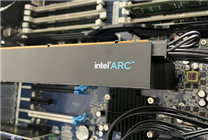EU’s Semiconductor Ambitions Face Setbacks: Intel Cancels Major Plans
Summary:
- The EU’s aspirations to secure 20% of global semiconductor production are under threat following Intel’s cancellation of significant factory construction in Europe.
- With a total investment of €34.2 billion originally planned, Intel cited insufficient customer demand as a reason for the withdrawal.
- Despite this setback, other semiconductor manufacturers continue to invest in the European market, although primarily focusing on older technologies.
The landscape of semiconductor manufacturing is increasingly seen as a battleground for global technological supremacy, where countries vie for leadership in this crucial sector. Recently reported developments indicate that the European Union (EU) is encountering significant challenges in its quest to solidify its position in the global semiconductor market. Initially aiming to elevate its production capacity to account for 20% of global output, the bloc’s ambitions have been significantly undermined by unexpected events, notably Intel’s decision to abandon its plans to build advanced semiconductor factories in Europe.
The EU previously announced substantial investment plans, which included a commitment of €30 billion to establish an advanced process chip factory in Magdeburg, Germany, along with an additional €4.2 billion earmarked for an advanced packaging and testing facility in Poland. This remarkable investment total of €34.2 billion (approximately ¥281.6 billion) was greeted with optimism by EU officials, who viewed it as a critical stride towards achieving technological independence and capacity expansion.
In tandem with these investment strategies, the EU provided extensive subsidies to entice firms into committing to its semiconductor initiative. Germany, for example, allocated €9.9 billion in subsidies for the construction of the factory, while Poland received €1.7 billion to support its own project. Such financial incentives reflected the EU’s earnest intentions and commitment to transforming its semiconductor landscape.
However, the tides turned in July when Intel formally retracted these ambitious plans. The primary rationale for Intel’s withdrawal centers around a fundamental lack of demand from potential customers. The company’s leadership expressed concern that investing tens of billions of euros into facilities might not yield a return on investment, presenting an unacceptably high financial risk. Consequently, this development has sent shockwaves throughout the EU’s technological aspirations.
Intel’s cancelled factory plans were more than just a setback; they represented a critical opportunity for the EU to harness advanced semiconductor manufacturing capabilities. With Intel’s retreat, the hopes of accessing cutting-edge technology before 2030 have been dashed, casting a long shadow over the EU’s strategic ambitions.
Despite Intel’s exit, the EU still attracts attention from other key players in the semiconductor domain. Companies like TSMC, Bosch, and Infineon are actively expanding their footprint in Europe, focusing on manufacturing capacities geared primarily towards automotive electronics. Collectively, these companies are constructing a chip factory in Germany that emphasizes producing components using 22-28nm CMOS and 12-16nm FinFET processes — technologies that, while essential, are not at the forefront of semiconductor innovation.
Furthermore, GlobalFoundries (GF) has also been a consistent investor in European semiconductor manufacturing. Their chip facility in Dresden, Germany, boasts one of the largest global production capacities, albeit primarily for processes exceeding 22nm. These operations highlight the ongoing relevance of older fabrication technologies, even as the industry steadily pivots towards more advanced nodes.
While the EU’s original goals remain commendable, the perturbations arising from Intel’s withdrawal pose significant hurdles. EU officials maintain that their vision of achieving a 20% share of the global chip production capacity within the next decade is still attainable, citing the continued interest of other semiconductor manufacturers as a positive sign. The situation exemplifies both the fragility and complexity of the semiconductor industry, where investment decisions are contingent upon demand dynamics and the broader geopolitical climate.
In conclusion, while the EU’s ambition to carve out a substantial role in the semiconductor marketplace showcases a forward-thinking approach, the withdrawal of a key player like Intel underscores the unpredictable nature of this sector. As the landscape evolves, stakeholders must adapt strategies that not only harness existing technology but also cultivate innovative pathways for development. The coming years will be crucial in determining whether Europe can navigate these challenges and emerge as a pillar of semiconductor excellence.










